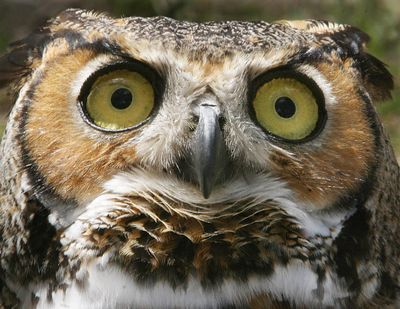Timing is of the essence for many wild animals

Winter doesn’t put a chill on the reproductive instincts of certain wild critters. When you’re hot, you’re hot, even if the temperatures are not.
Critters such as wolves and great horned owls are getting the job done now. It’s their season to be in season.
Nature functions on its own biological clock. Big-game animals such as deer, elk and moose mate in the fall to accommodate longer gestation periods in a schedule crucial to the survival of their species.
Does and cows must endure winter. Then they need the nourishment of spring green-up to produce the rich milk for fawns and calves that will be born in late May and early June.
Ideally, fawns and calves are born during a brief window, overwhelming predators so a higher percentage of the crop survives during their most vulnerable period – the two weeks after they drop into the food chain.
By the time a fawn is a few weeks old, it has a much better chance of fleeing to avoid the teeth of coyotes, cougars, bears and wolves. Meanwhile, the fawn has a small window of opportunity to put on the size and fat it will need to survive its first winter, the next life stage when its probability of dying is extremely high.
Fawns conceived late and born late are less likely to survive either of these vulnerable periods. Timing is critical.
Although gray wolves breed generally in February, the schedule is still closely linked to the lifecycle of their big-game prey.
Around April, a wolf pack’s alpha female will den up. After a 63-day gestation she’ll deliver four to six pups born blind and deaf, weighing about a pound.
Early spring, the perfect time to set up a nursery, usually spells bounty for wolves. Big game is still mostly concentrated on winter ranges. The prey is still winter-weary and weak. Some deer and elk die naturally from the toll, giving the predators a free meal.
During the first three weeks of their lives, wolf pups nurse every four to six hours in the den and soak up the warmth of their mother, who survives by eating food brought in by other pack members.
At about eight weeks, the pups are weaned and moved to rendezvous sites as their mother and the rest of the pack takes advantage of the relatively easy pickin’s of fawns and calves being born.
By fall, the surviving pups begin to travel with the pack, joining in the hunts. Life is good.
But even wolves and coyotes are late to love compared with great horned owls.
If you ventured outside into the wooded areas around Spokane on a cold, calm December night, as our family is fond of doing, you had a good chance of hearing the owls getting into gear.
The low muffled hoots were males staking out their breeding territories. Days or weeks later, they’d be joined by females, and maybe you heard them calling to each other.
The male will haunt the woods with the classic great-horned owl pattern of four or five hoots: “Whoo, whoo-hoo, whooo, whooo.”
Whether the female responds with a higher pitched two-syllable call, or six to eight lower pitched hoots, it’s a magical moment to be in the winter woods, headlamp turned off, simply listening.
This early start to family planning is critical because great horned owls, perhaps the most versatile and deadly aerial predators on our landscape, require months to develop as chicks.
Most great horned owls are getting ready to nest now, if they’re not already on board.
The early start allows them to “borrow” nests already made by magpies or other birds of prey, saving the hassle of building their own. When you’re at the top of the food chain, why not let other critters do the grunt work?
The mother lays 1-3 eggs and incubates them for nearly a month.
The chicks will require another 10-12 weeks of feeding – these are big babies that demand a lot of food – before they grow to nearly 20 inches tall and fledge. They can remain dependent on both parents for food into fall.
Hummingbirds are family flakes by comparison. The hummer that might nest in your yard during the relative comfort of summer – the male is a deadbeat after procreation – will incubate a couple of eggs for about 14 days. The female will feed and care for the chicks, but she may already have headed off on her own when the last of the birds fledges around day 10.
Great horned owl adults devote about 75 percent of the year to making and baking a family, and winter is no deterrent.
Unless you’re looking at it from the perspective of a rodent, rabbit, squirrel or virtually any other bird in the field, it’s timing well spent.
Contact Rich Landers at (509) 459-5508 or email richl@spokesman.com.